Oak Wilt
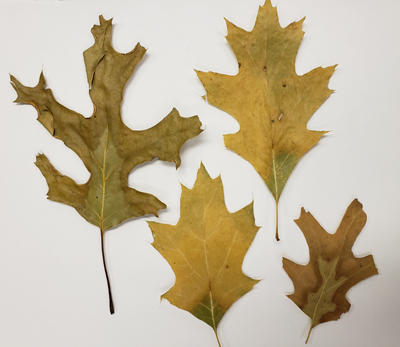
Oak wilt leaf symptoms on red oak.
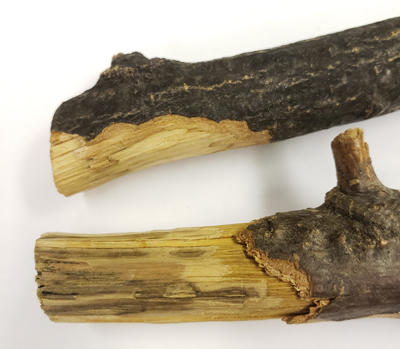
Removing the bark shows the vascular discoloration in this red oak branch. The discoloration can be black to grey but sometimes it may not be easy to see in infected branches.
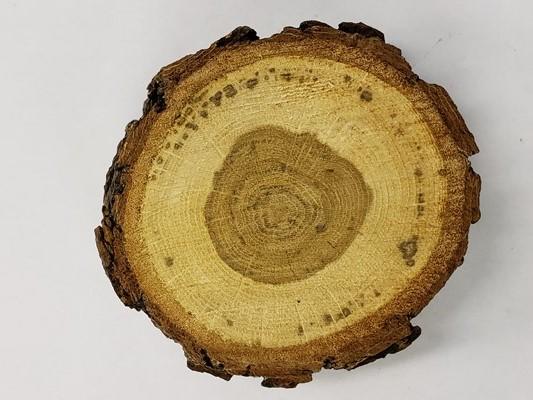
Vascular discoloration in white oaks can occur within the older xylem since white oaks may survive for some time after infection.
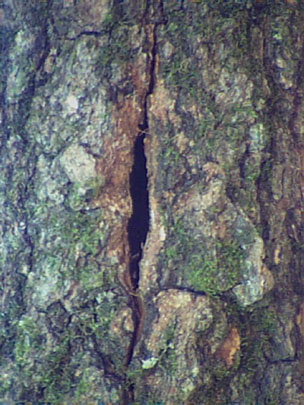
Crack in the bark on red oak caused by pressure pads in the mycelial mat of the oak wilt fungus. The fungus produces a strong aroma that attracts the Nitidulid beetles.
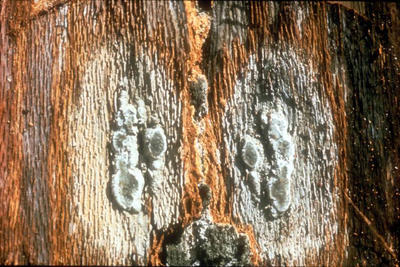
The fungus causing oak wilt produces fungal mats under the bark. These produce pressure to break open the bark. Sap feeding beetles come to the mats and pick up spores. If they leave to feed on the sap of a fresh wound on a healthy oak they will bring the pathogen and inoculate the tree.
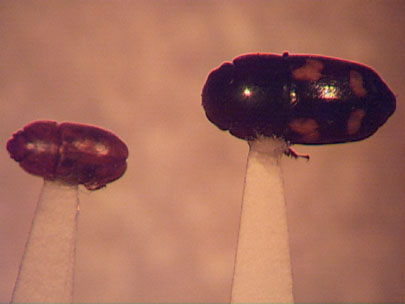
Sap feeding beetles that vector oak wilt.
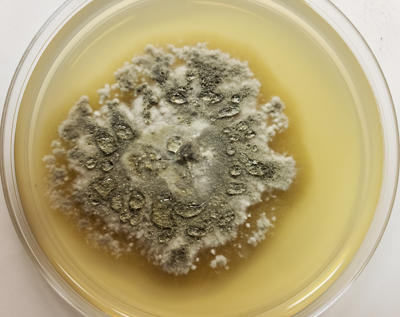
The oak wilt fungus, Bretziella (Ceratocystis) fagacearum, growing in culture.
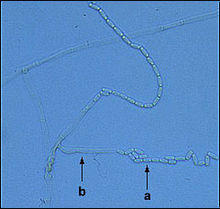
Endoconidia are produced on mats a= conidia, b= conidiophore.
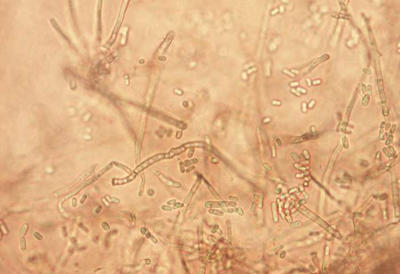
Endoconidia are asexual spores.
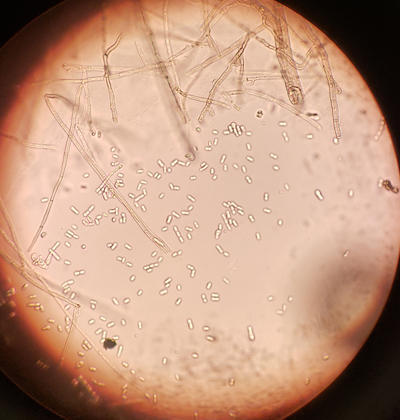
Large numbers of spores are produced on mats and can be easily picked up by the beetles.
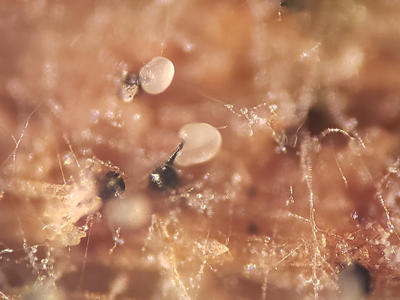
When A and B strains grow together perithecia can form producing ascospores. The perithecium has a black bulbous base, neck and white mass of sticky ascospores. The ascospores accumulate at the tip perithecium neck.
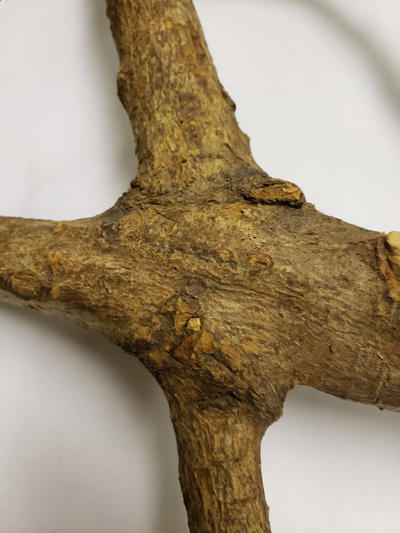
A root graft between two red oaks. The fungus can move from tree to adjacent tree underground via root grafts.